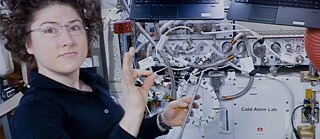Absolute Zero
Avoid the False Morel
Rømer is a clean man. Excrement bothers him. A small fly has become entangled in his wig. Fahrenheit watches it struggle in the throes of death. Rømer notices nothing.
In 1701, Ole Rømer develops the Rømer scale.
Zero degrees Rø denotes the melting point of brine, 60 degrees Rø the boiling point of water.
In 1708, Daniel Gabriel Fahrenheit visits Ole Rømer in Copenhagen. Sleet whips diagonally through the alleys. The great bombardment was eight years ago. Where houses once stood, holes gape. Caries, attacking cities. Fahrenheit flips up his collar. He narrowly avoids the contents of a chamber pot. The hand that emptied it disappears behind a soot-smeared gable. Daniel Gabriel Fahrenheit has shit on his shoe, but this does not dampen his joyful anticipation.
Ole Rømer shows him his apparatus.
They drink coffee. Rømer has been mayor of Copenhagen for three years now. He discovered that the speed of light is finite. He prompted the introduction of the Gregorian calendar in Denmark. The upgrade to the sewer system. The introduction of streetlights. Rømer is a clean man. Excrement bothers him. A small fly has become entangled in his wig. Fahrenheit watches it struggle in the throes of death. Rømer notices nothing.
Rømer cannot even indicate the temperature in Copenhagen at the moment with his scale, thinks Fahrenheit. One would have to produce the coldest possible cold, he thinks. An actual zero point. With this plan, he returns to Gdansk.
Three years after Fahrenheit’s visit, the plague breaks out in the Hanseatic city of Copenhagen. Counterfeit health passports are flourishing.
Fahrenheit visits the grave of his parents. They died decades ago from mushroom poisoning. Yes, both of them. How mother’s gravy got lost in the brain folds of the fruiting body. How the child faked a stomach ache to escape the mushroom. And didn’t escape it for that very reason.
Fahrenheit is a merchant. He is a glassblower. He is not a royal scientist, nor is he a civil servant. He’s just a hustler. But what a hustler!
Three calibration points are better than two, he thinks. Mercury is better than ethyl alcohol.
At night, Fahrenheit dreams of plague doctors with beaks made of ice. Through his bones creeps sal ammoniac. Fine channels run through the lime, like a mycelium left by ants that cultivate mushrooms. A shiver trickles down his neck. Fahrenheit imagines someone pouring liquid metal into his mouth. For a moment, the astonished “o” of his lips frames a silvery moon. A thousand pricks cut, neither hot nor cold, and then — the plague doctor pecks him in the face. The skin gives way. Bones splinter. What remains of Fahrenheit is a plant made of cooled metal. Thin filaments reach out from his guts. His heart: a lump. But Gerda just won’t come. No one cries him whole again. No one shakes the word “eternity” out of the Scrabble bag.
In 1728, a great fire breaks out in Copenhagen. Rømer’s apparatuses, the gas lamps and wires and salt solutions that he used to keep on his large, intarsia-adorned desk — they are gone. They exist only in the memories of those who saw them. Fahrenheit mixes a cold pack. Its exact ingredients are not recorded. It measures 255 degrees Kelvin.
150 years later, the young Baron K. sits at his great-grandfather’s writing desk and scribbles down his proposal for a thermodynamic heat scale. But that is another story.
0 degrees Fahrenheit has never denoted the coldest possible point.
The ultimate, the absolute stillness that sets in when everything freezes. Nothing moves. Only in the folds of Daniel’s brain does a last echo tremble.
This article was commissioned by and created in collaboration with Das Wetter – Magazin für Text und Musik.
Zero degrees Rø denotes the melting point of brine, 60 degrees Rø the boiling point of water.
In 1708, Daniel Gabriel Fahrenheit visits Ole Rømer in Copenhagen. Sleet whips diagonally through the alleys. The great bombardment was eight years ago. Where houses once stood, holes gape. Caries, attacking cities. Fahrenheit flips up his collar. He narrowly avoids the contents of a chamber pot. The hand that emptied it disappears behind a soot-smeared gable. Daniel Gabriel Fahrenheit has shit on his shoe, but this does not dampen his joyful anticipation.
Ole Rømer shows him his apparatus.
They drink coffee. Rømer has been mayor of Copenhagen for three years now. He discovered that the speed of light is finite. He prompted the introduction of the Gregorian calendar in Denmark. The upgrade to the sewer system. The introduction of streetlights. Rømer is a clean man. Excrement bothers him. A small fly has become entangled in his wig. Fahrenheit watches it struggle in the throes of death. Rømer notices nothing.
Rømer cannot even indicate the temperature in Copenhagen at the moment with his scale, thinks Fahrenheit. One would have to produce the coldest possible cold, he thinks. An actual zero point. With this plan, he returns to Gdansk.
Three years after Fahrenheit’s visit, the plague breaks out in the Hanseatic city of Copenhagen. Counterfeit health passports are flourishing.
Fahrenheit visits the grave of his parents. They died decades ago from mushroom poisoning. Yes, both of them. How mother’s gravy got lost in the brain folds of the fruiting body. How the child faked a stomach ache to escape the mushroom. And didn’t escape it for that very reason.
Fahrenheit is a merchant. He is a glassblower. He is not a royal scientist, nor is he a civil servant. He’s just a hustler. But what a hustler!
Three calibration points are better than two, he thinks. Mercury is better than ethyl alcohol.
At night, Fahrenheit dreams of plague doctors with beaks made of ice. Through his bones creeps sal ammoniac. Fine channels run through the lime, like a mycelium left by ants that cultivate mushrooms. A shiver trickles down his neck. Fahrenheit imagines someone pouring liquid metal into his mouth. For a moment, the astonished “o” of his lips frames a silvery moon. A thousand pricks cut, neither hot nor cold, and then — the plague doctor pecks him in the face. The skin gives way. Bones splinter. What remains of Fahrenheit is a plant made of cooled metal. Thin filaments reach out from his guts. His heart: a lump. But Gerda just won’t come. No one cries him whole again. No one shakes the word “eternity” out of the Scrabble bag.
In 1728, a great fire breaks out in Copenhagen. Rømer’s apparatuses, the gas lamps and wires and salt solutions that he used to keep on his large, intarsia-adorned desk — they are gone. They exist only in the memories of those who saw them. Fahrenheit mixes a cold pack. Its exact ingredients are not recorded. It measures 255 degrees Kelvin.
150 years later, the young Baron K. sits at his great-grandfather’s writing desk and scribbles down his proposal for a thermodynamic heat scale. But that is another story.
0 degrees Fahrenheit has never denoted the coldest possible point.
The ultimate, the absolute stillness that sets in when everything freezes. Nothing moves. Only in the folds of Daniel’s brain does a last echo tremble.
This article was commissioned by and created in collaboration with Das Wetter – Magazin für Text und Musik.





![Andy Warhol, “Screen Test: Bob Dylan [ST83],” 1966 Andy Warhol, “Screen Test: Bob Dylan [ST83],” 1966](/resources/files/jpg1149/bob-dylan-st-83-1966-cawm_23_1ss-formatkey-jpg-w320r.jpg)

